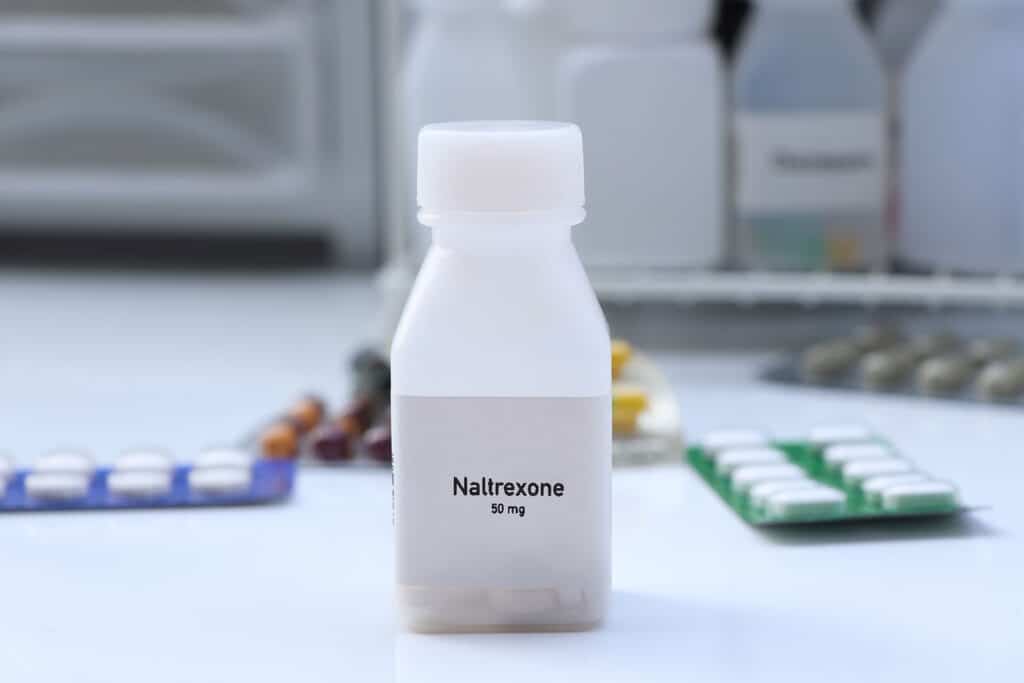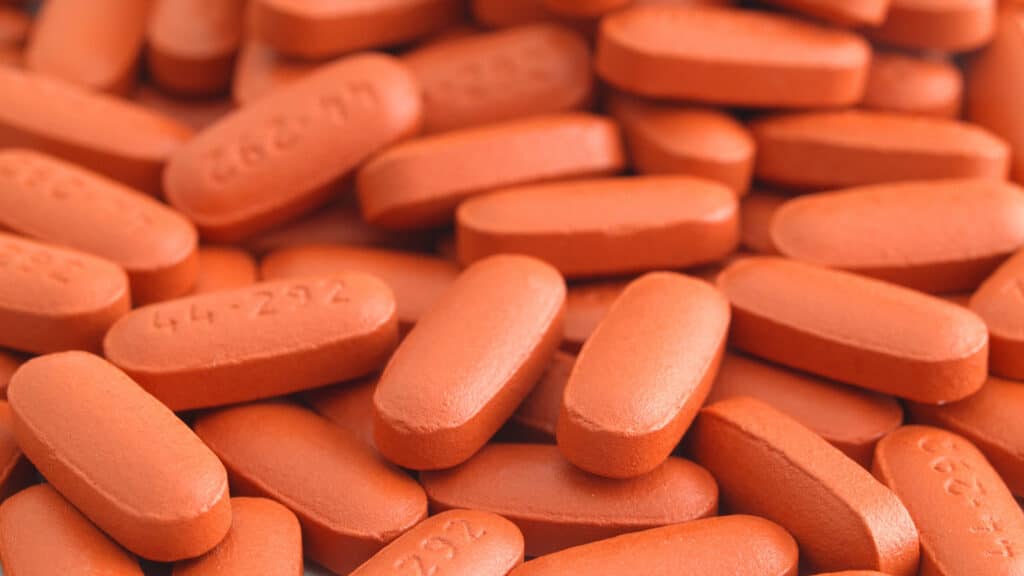Have you ever noticed your eyes looking red and bloodshot after a night of drinking?
This is normal. Alcohol consumption affects your body in numerous ways, and your eyes are no exception. While red eyes might seem like a minor inconvenience, they’re a visible sign of how alcohol impacts your eye health.
Today, we’ll help you understand the dangerous effects of alcohol on your eyesight. This way, you can make informed decisions about your drinking habits and recognize when it might be time to seek help for what may be a potential alcohol use disorder.
Can Alcohol Cause Bloodshot Eyes?
Yes, alcohol can cause bloodshot eyes. This happens almost immediately after drinking. Your eyes become red because alcohol affects your blood vessels directly.
When you drink, alcohol enters your bloodstream quickly. It then causes blood vessels throughout your body to dilate or expand. The tiny blood vessels in your eyes are most susceptible to this effect. Their delicate capillaries become more visible when they’re enlarged.
Note: Even moderate alcohol consumption can cause noticeable redness in sensitive individuals.
Why Does Alcohol Cause Red Eyes?
The science behind alcoholic eyes is straightforward. Alcohol acts as a vasodilator. This means it relaxes and widens your blood vessels.
Your eyes contain thousands of tiny blood vessels (capillaries) that are normally quite small and barely visible. When alcohol enters your system, it triggers these capillaries to expand. The increased blood flow makes them appear more prominent against the white of your eye.
Alcohol also reduces oxygen levels in your blood. This forces your heart to work harder to pump blood. The increased blood pressure puts additional strain on delicate eye vessels. Your body tries to compensate by dilating blood vessels even more.
The dilation isn’t just limited to your eyes, either. You might notice your face looks flushed, too. This happens for the same reason.
Remember: Alcohol affects blood vessels throughout your entire body. Your eyes just happen to be where the effects are most visible. After all, the thin skin around your eyes makes blood vessel changes particularly noticeable.
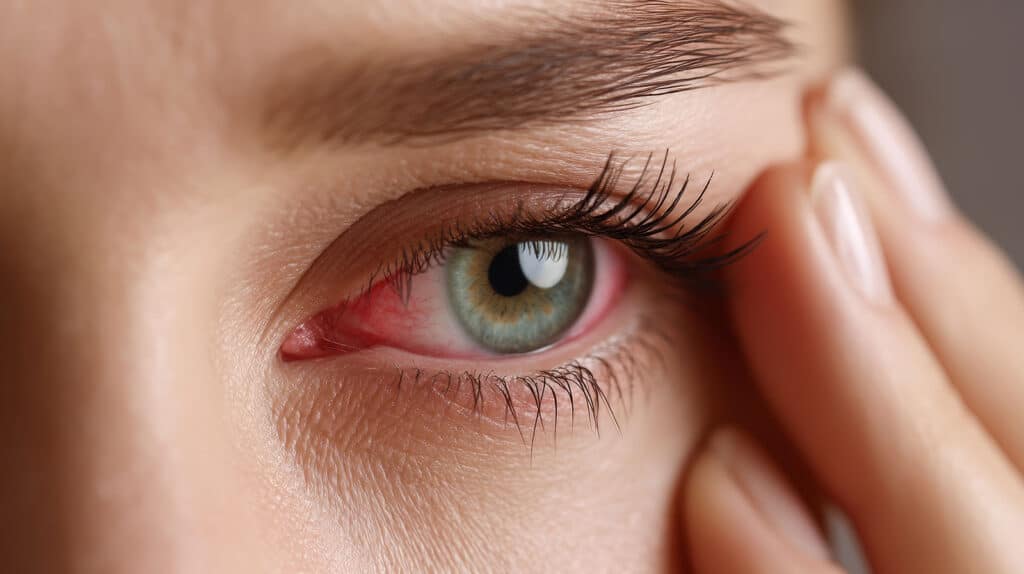
What Other Vision Problems Does Alcohol Cause?
Red eyes are just the beginning. Alcohol affects your vision and eye health in many other ways.
Some effects happen immediately after drinking. Others develop over time with regular alcohol use.
Short-term Effects on Eyesight
- Blurred Vision
Alcohol interferes with your eye muscle coordination. This makes it harder to focus on objects clearly. Your eyes struggle to work together properly. Reading becomes difficult. Even simple tasks like texting can be challenging.
- Double Vision
Drinking alcohol disrupts communication between your eyes and brain. Your brain has trouble processing visual information correctly. You might see two of everything. This effect becomes stronger with increased alcohol intake.
- Poor Light Adjustment
Your pupils react more slowly under alcohol’s influence. Moving from bright to dark spaces becomes problematic. Your eyes take longer to adjust. This creates dangerous situations, especially when driving at night.
- Reduced Contrast Sensitivity
Alcohol makes it harder to distinguish between colors and shades. You lose the ability to detect subtle differences. This affects depth perception. It becomes difficult to judge distances accurately.
- Eye Twitching
Alcohol can stimulate your eye muscles unexpectedly. This causes involuntary eyelid twitching called myokymia. The twitching usually stops once alcohol leaves your system. However, it can be annoying and distracting while it lasts.
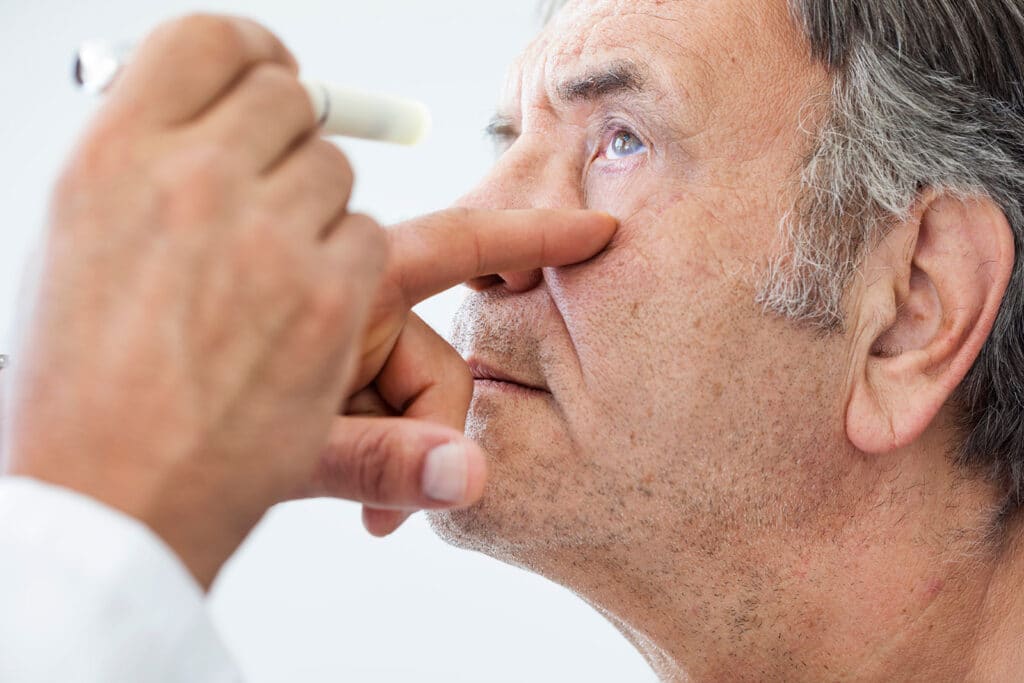
Long-term Effects on Eyesight
- Chronic Dryness
Heavy drinking reduces your eyes’ ability to produce tears effectively. Alcohol acts as a diuretic, causing dehydration. Your tear glands can’t function properly without adequate hydration. Dry eye syndrome becomes a persistent problem rather than a temporary inconvenience.
- Cataracts Development
Long-term alcohol abuse significantly increases cataract risk. The lens of your eye becomes cloudy over time. Vision becomes increasingly blurred and dim.
Heavy drinkers develop cataracts much earlier than non-drinkers. Multiple studies confirm this strong connection.
- Age-related Macular Degeneration
Excessive alcohol consumption and/or binge drinking accelerate AMD development. This condition affects your central vision. You lose the ability to see the fine details. Reading, driving, and recognizing faces become extremely difficult.
Note: Early-onset AMD is more common in heavy drinkers.
- Optic Neuropathy
Chronic alcohol use can damage your optic nerve permanently. This leads to painless vision loss that’s often irreversible.
Color vision may be affected first. Complete blindness can occur in severe cases. This condition is often called toxic amblyopia.
- Vitamin Deficiency Effects
Not many know that alcohol interferes with vitamin absorption in the liver. Vitamin A deficiency causes night blindness and corneal problems. B-vitamin deficiencies lead to eye muscle weakness or paralysis.
In fact, these nutritional deficits compound other alcohol-related eye problems significantly.
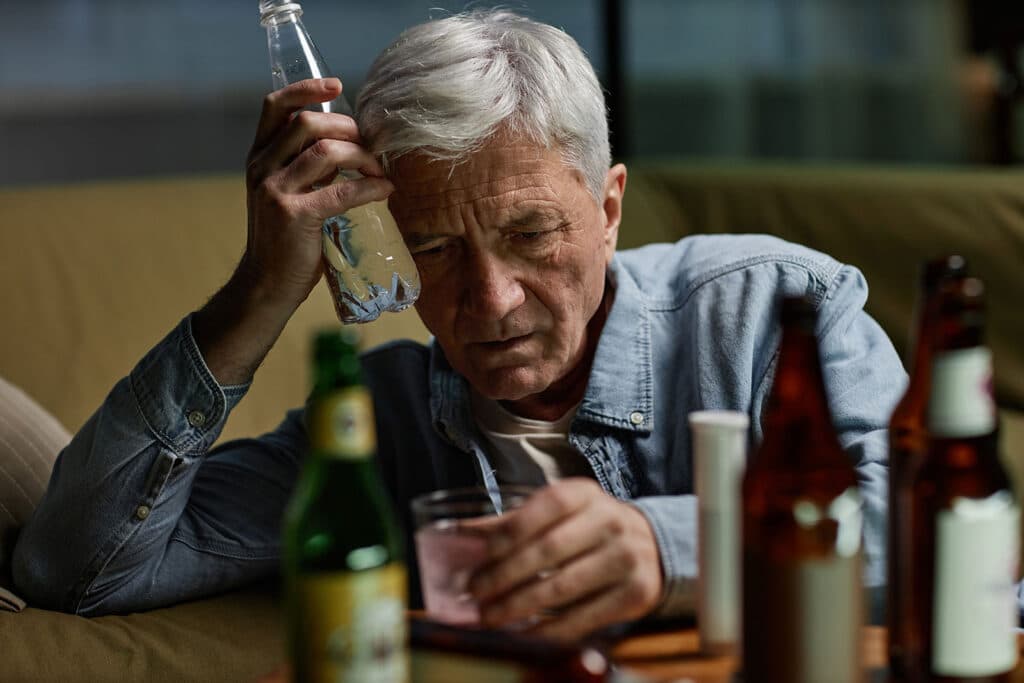
Does Alcohol Abuse Lead to Loss of Vision?
Yes, alcohol abuse can lead to partial or complete loss of sight. The risk increases dramatically with long-term binge drinking. People suffering from alcohol addiction face an increased risk of vision loss. Their bodies struggle to absorb essential nutrients needed for eye health.
Here’s what happens: Chronic inflammation from alcohol damages delicate eye tissues over time. The combination of direct toxicity and nutritional deficiency creates a perfect storm for serious eye problems.
Alcohol abuse accelerates the progression of many eye diseases. Vision problems that might develop slowly in non-drinkers can advance rapidly in heavy drinkers. Early intervention is, as such, crucial.
Glaucoma Progression
Alcohol abuse significantly worsens glaucoma outcomes. This disease involves increased pressure inside your eyeball. The pressure damages your optic nerve gradually.
Additionally, alcohol can cause dangerous spikes in eye pressure. It also interferes with medications used to treat glaucoma. People with existing glaucoma who drink heavily often experience faster vision loss.
Diabetic Retinopathy Complications
Heavy drinking makes diabetic eye disease much more severe. That’s because too much alcohol affects blood sugar control dramatically.
Poor glucose management accelerates retinal damage as well. Blood vessels in your retina become weak and leak. This leads to swelling and bleeding inside your eye.
Corneal Deterioration
Chronic alcohol use causes your cornea to become thinner over time. The latter is a clear protective layer that covers your eye’s surface. Thinning makes your cornea more vulnerable to injury and infection.
Severe cases can lead to corneal perforation. This creates a hole in your eye that requires emergency surgery.
Retinal Detachment Risk
Long-term alcohol abuse increases retinal detachment risk. High blood pressure from drinking weakens retinal blood vessels. Nutritional deficiencies affect retinal tissue health.
The retina can then pull away from the back of your eye. This medical emergency causes sudden, severe vision loss if not treated immediately.
Liver Disease and Jaundice
Severe alcohol abuse damages your liver extensively. When your liver fails, toxins build up in your bloodstream. This build-up causes jaundice, making the whites of your eyes turn yellow.
Advanced liver disease can affect your entire visual system. You may face blood clotting problems or risk your eyes bleeding.

How to Prevent Alcoholic Eyes When Drinking
Let’s be clear: The best way to avoid alcohol-related red eyes is to not drink at all. However, we understand that that’s not always realistic for everyone.
If you choose to drink, there are four strategies to minimize eye redness and protect your eye health.
1. Limit Your Alcohol Intake
Set clear boundaries before you start drinking. Stick to one drink per hour maximum. This gives your body time to process alcohol properly. Your blood vessels won’t dilate as dramatically with slower consumption.
Plus, consider alternating alcoholic drinks with water or non-alcoholic beverages. Doing this reduces overall alcohol exposure while keeping you socially engaged.
2. Stay Properly Hydrated
Drink plenty of water before, during, and after consuming alcohol. Remember, alcohol is a diuretic and will dehydrate you quickly, and dehydration makes red eyes worse and longer-lasting.
Make sure to aim for one glass of water between each alcoholic drink. Maybe keep a water bottle nearby as a visual reminder.
3. Choose Lower-Alcohol Options
Fun fact: Beer and wine typically cause less eye redness than hard liquor. The lower alcohol concentration means less dramatic blood vessel dilation.
Additionally, mixed drinks with lots of mixer dilute the alcohol content. However, be careful not to drink larger quantities to compensate. The total amount of alcohol still matters most.
4. Use Lubricated Eye Drops
OTC eye drops can provide temporary relief from redness. Look for drops specially designed for red eyes. Apply them before drinking if you know you’re sensitive.
That said, don’t rely on them as a long-term solution. If you need eye drops regularly after drinking, consider reducing your alcohol consumption instead.

Final Thoughts
Red eyes from drinking alcohol are often a visible warning sign of how alcohol affects your body. Short-term effects like bloodshot eyes and blurry vision are uncomfortable. Long-term damage can lead to devastating and permanent eye conditions.
If you or a loved one is struggling with alcohol use, help is available. Contact our addiction treatment center today to learn about treatment options available for alcohol addiction.
Your vision and overall health are worth protecting. Don’t wait until permanent damage occurs to seek medical advice.
FAQ
What should I do if I notice eye problems from excessive drinking?






